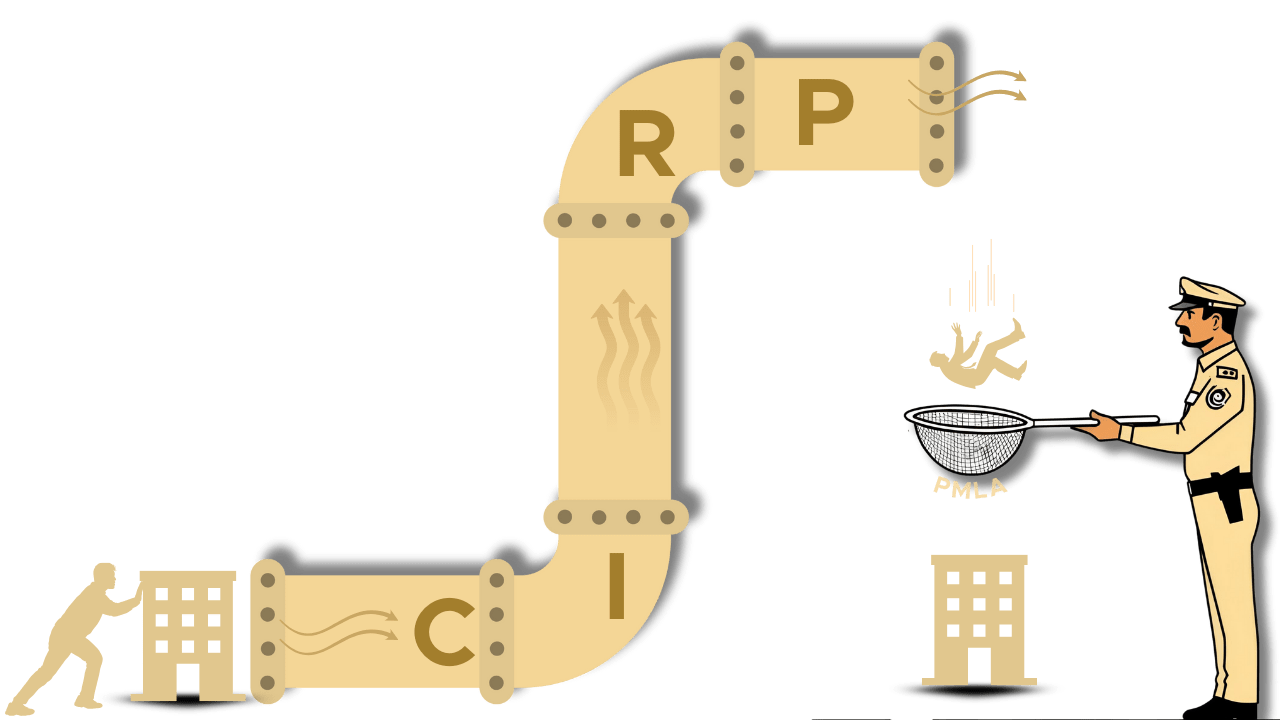Listen to this article | Download PDF
DEBT RESOLUTION: A DISTANT DREAM?
CREDITORS WORST-HIT UNDER THE REVISED IBC REGIME
The Insolvency and Bankruptcy Code, 2016 was enacted so as to be invoked by creditors to initiate an insolvency resolution process when a company defaults in clearing payable dues. Though economic cleansing of sick companies was paramount, however, with time the process began being used by many creditors for quick recoveries and debtors struggled to keep afloat. The Code with all its technicalities was only beginning to settle and acquaint itself to the business industry, when the Covid 19 outbreak changed its course. During the ongoing pandemic, the Government has announced various relief measures to tackle the economic breakdown and rampant payment defaults expected in the months to come. Two significant steps are discussed herein below:
ORDINANCE FOR SUSPENSION OF SECTION 7,9 AND 10 IBC, 2016
With mass defaults, would come mass insolvency proceedings. Such a condition would hamper the economic fiber of the country as each business entity, more or less, would be subjected to the Code. In order to avoid this condition, an unprecedented move is in the process of being made by the Government wherein the Cabinet has already approved the Ordinance to suspend the Code for a period of 6 months or more. This would imply that even upon default, the Code would not be triggered by the Creditors against the debtors during the given period, taking away the court led resolution mechanism for bad debts.
Whose Burden is it anyway?
This suspension is deemed necessary amidst the Covid-19 pandemic and consequent national lockdown. Debtor protection being paramount at this time has been prioritized by the Government. The step has definitely protected numerous MSME’s and other corporate debtors from being taken to resolution after business downfall during the pandemic (as the Code has not yet acknowledged force majeure as a valid defence for default). However, on the other hand, the impact on creditors is considerable as they have been rendered disable to resolve and recover debt. Even corporate debtors who were empowered to invoke the process themselves upon experiencing difficulty in repayment of debt would have no recourse to debt structuring through the Court during the coming times. It appears that debt resolution will become a distant dream during the suspension.
Resultantly, even Creditors whose dues became payable much prior to the Covid era are placed in a difficult position unintentionally. Repayment of credit facilities and/or dues against goods/services is expected to recede as NCLT will not be a forum of concern for debtors for some time. The Creditors will need to explore other alternative effective methods to be repaid their dues. This suspension will definitely have serious consequences upon the market operations and creditor behavior who will face liquidity restriction and hesitation in advancing credit, delivering goods and rendering services. Business development and growth in such circumstances may be hurt to some extent.
RAISE IN MINIMUM DEFAULT AMOUNT: NOTIFICATION DATED 24.03.2020
So far creditors could approach NCLT against companies when there was a minimum default of 1 lac rupees. Now, in exercise of the powers conferred by the proviso to section 4 of the Insolvency and Bankruptcy Code, 2016, the Central Government has raised the minimum amount of default to one crore rupees vide notification dated 24.03.2020 for the purposes of invoking the jurisdiction of National Company Law Tribunals under Section 7,9 and 10 of IBC. Thus, after the suspension period ceases to exist and IBC is revived, all creditors will not be placed similarly as before. The smaller creditors are the worst affected by the said notification.
Who are Financial Creditors and how would they be affected?
Financial Creditors include Banks, NBFC’s or other persons/entities who owe a financial debt i.e. a debt along with interest, if any, which is disbursed against the consideration for the time value of money. The impact of the increased default amount can be understood as follows:
- Financial Creditors whose applications stand admitted on or before 03.2020 would be unaffected.
- Financial Creditors whose applications were pending admission on or before 03.2020 and had a claim of more than 1 Crore would not be affected.
- Financial Creditors whose applications were pending admissions on or before 03.2020 and their claimed amount was less than 1 Crore are the ones impacted by the said notification.
Would Pending Applications by Financial Creditors with less than 1 Crore of default amount be dismissed?
It is unlikely that such creditors would face dismissal. Section 7(1) IBC read with the Explanation to Section 7iii, permits a financial creditor to file an application for initiating corporate insolvency resolution process either by itself or jointly with other financial creditors. As there is an express provision in the Code, it is expected that in such cases, NCLT would permit financial creditors to amend their applications or withdraw and refile applications to include another/other financial creditor(s) or may even permit the given financial creditor to bring proof of default committed by the corporate debtor against other financial creditors so as to collectively reach a default amount of Rs. 1 crore and above with respect to the corporate debtor.
Thus, default amount by a Corporate Debtor vis-à-vis all financial creditors cumulatively would matter in deciding the maintainability of an Application filed by a Financial Creditor. A pattern could also be witnessed when financial creditors with small claims may begin to collaborate with each other to raise the total default amount to one crore and take the corporate debtor to resolution.
Who are Operational Creditors and how would they be affected?
In the most general terms, operational creditors are persons/entities who owe an undisputed operational debt i.e. those having an amount due from a defaulting company/corporate debtor against the delivery of any goods or rendering of any services. The impact of the increased default amount will be majorly faced by the operational creditors. Operational Creditors with a claim of less than 1 Crore have been rendered unable to initiate insolvency resolution against a Company 24.03.2020 onwards.
- What happens where a Demand Notice has been served for a claim less than 1 Crore?
Cases where a Demand Notice under Section 8, IBC has already been served prior to 24.03.2020, appear to be at an equally disadvantaged position. Though the claim is against a default prior to Covid-19, the Demand Notice appears to have no force. If, however the facts of a case permit the claim amount to be revised so as to meet the required default limit (for instance by addition of interest amount), then a fresh demand notice must be issued on an urgent basis. Of course, the revised demand notice would only have strength to maintain an application, if no dispute has been raised prior to it.
- What happens where an application under Sec 9 has been filed but pending admission for a claim less than 1 Crore?
It appears that such cases would not be maintainable and would stand dismissed unless a clarification is issued by the Government protecting the rights of such operational creditors. Cases which have been heard and reserved for judgement would meet a similar fate.
- What happens where an Application has been admitted for a claim less than 1 Crore?
If Insolvency Resolution Process has begun, the notification would have no effect.
Can Operational Creditors File Applications jointly before NCLT?
It is to be noted that there is no provision which allows operational creditors to file an application under section 9 jointly as in the case of Financial Creditors.
More so, looking at the nature of debt involved, operational creditors would seldom cross the revised minimum default limit. Thus, Operational Creditors are the worst hit by the increased default amount under the revised IBC Regime. Their exclusion would be actively witnessed in the post Covid times.
Can Employees/Workmen approach NCLT after the Notification?
Employees and Workmen fall under the category of Operational Creditors. Employees/ workmen/ Professionals will be eligible to approach NCLT against a company upon non-payment of dues/salaries/wages as long as the total default amount is 1 Crore or more. However, Joint Applications are not maintainable by the Employees. Thus, only highly paid employees/professionals would be able to initiate IBC proceedings against defaults.
What should be the Next Steps?
In light of the above, it is necessary that creditors re-evaluate the legal remedies available to them. During suspension of IBC, it appears that the distress and financial burden of the pandemic will shift tables from the debtor to the creditor. Both Creditors and Debtors need to prepare for the same. While Creditors may choose to wait for the Code to come back into effect, they could also lookout for other efficient mechanisms to be repaid the rightful dues. However, the possibility of private restructuring and resolution of debts should most definitely be explored by both parties.
After the suspension ceases to have effect and IBC is revived, though financial creditors will fairly remain protected, recourse to IBC will become nearly impossible for small operational creditors (less than 1 crore) who will turn to conventional legal recourses including ordinary suits, summary suits, RERA and arbitration proceedings which are not as fast paced as IBC. It may however be pertinent to clarify that creditors will continue to file claims before an IRP, irrespective of the default amount, once an insolvency application by another eligible creditor against the corporate debtor is admitted. Thus, the increased amount will only affect the eligibility of the creditor initiating CIRP, but once an application is admitted, all creditors can continue to file claims before the appointed IRP.
In any event, though suspension measures are temporary in nature, it appears that the raise in threshold limit, is here to stay and will eventually alter the nature of functioning of NCLT’s by shifting the lens of the bar, bench and litigants. However, irrespective of the status of the Insolvency and Bankruptcy Code, Financial Institutions will continue to benefit from SARFAESI and DRT’s. For comparatively speedier redressal of defaults, small operational creditors who register as MSME’s can also avail benefits under the MSMED, Act 2006 which deals with delayed payments stringently through the Facilitation Council (MSEFC). Legal Preparedness remains the key to Business safety and development.






